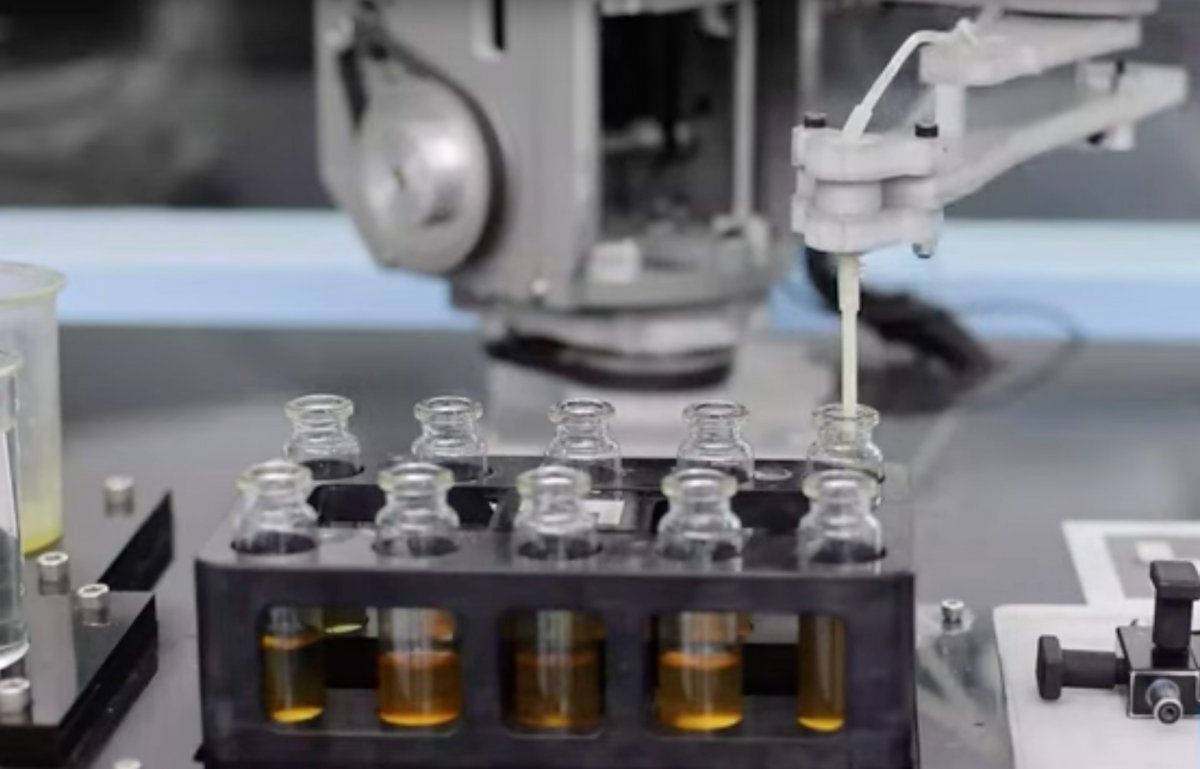An autonomous chemical robot produces oxygen from minerals found in Martian meteorites. A similar process could be used to provide oxygen to astronauts on Mars one day.
advertisement
Transporting oxygen to Mars to supply a Mars colony or potential astronauts is very expensive. So it must be done on site. Chinese scientists from the University of Science and Technology of China say that materials found on the Red Planet can be used for this purpose. To this end, the researchers developed a fully autonomous chemical robot, as described in the scientific paper “Automated synthesis of oxygen-producing catalysts from Martian meteorites by an AI-powered robotic chemist.” Which appeared in the composition of nature.
Using a high-energy laser, the robot analyzed the composition of five different Martian meteorites that came from Mars or were found on Earth. The robot detected six elements in sufficient quantities to form a catalyst for oxygen production. The elements are iron, nickel, calcium, magnesium, aluminum and manganese.
Recommended editorial content
With your consent, an external YouTube (Google Ireland Limited) video will be uploaded here.
Always upload a YouTube video
The robot examines the samples.
According to scientists, these elements are not the best for the planned project and limit the performance of the catalyst. However, it is available on Mars in the required quantities. In addition, large amounts of water are needed to extract oxygen from it. Then the energy needed to produce oxygen comes from sunlight.
Artificial intelligence determines the catalyst composition
The robot used artificial intelligence (AI) to determine which combination of elements would produce the best catalyst for oxygen production. Because individually testing 3.7 million possible combinations of Martian elements would take a long time, the robot’s artificial intelligence predicted which combinations might have the best chance of success. The robot then independently tested more than 200 stimuli it produced using saline and carbon dioxide.
The robot chose the stimulus that seemed most appropriate. This incentive is almost on par with the incentives that were available ten years ago. The chosen catalyst operates at -37°C. This roughly corresponds to the temperatures prevailing on Mars. Under these conditions, it can last longer than six days before it needs to be renewed.
The researchers propose a facility on Mars located in a 100-square-meter room with a 3-meter ceiling height. The catalytic converter is located in the ceiling. The team calculates that the system could produce oxygen levels in space similar to those on Earth over a period of about 15 hours.
NASA extracts oxygen from carbon dioxide
On the other hand, NASA plans to produce oxygen from carbon dioxide on Mars. 95% of carbon dioxide is in the atmosphere, so there is no need to extract additional water from the depths of Mars.
In an experiment on the Mars rover Perseverance, oxygen was produced using an instrument called Moxie (Mars Oxygen Experiment ISRU). Moxie first produced 5.37 g of oxygen in April 2021. Since then, NASA has been working to improve the yield. In June 2023, about 12 grams of oxygen were obtained in one hour, and in September it was 122 grams in ten hours. NASA now wants to build a larger, modified version of Moxie.
(OLB)

“Total coffee aficionado. Travel buff. Music ninja. Bacon nerd. Beeraholic.”








More Stories
Coral Seeding: Artificial Insemination Makes Coral More Heat Tolerant
Fear, Anger, and Denial: How People Respond to Climate Change – Research
LKH Graz: Using radiation to combat heart arrhythmias